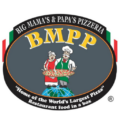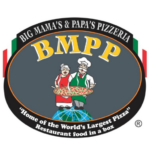Italian food, known for its rich flavors, vibrant colors, and deep-rooted cultural significance, is more than just a cuisine; it’s a celebration of tradition and a testament to Italy’s passion for exquisite dining. In this exploration, we will delve into the heart of Italian cooking, uncovering the secrets behind its popularity and versatility.
The Essence of Italian Cooking
The essence of Italian cuisine lies in its simplicity and the quality of ingredients. With recipes often passed down through generations, each dish tells a story, reflecting the history and landscape of its region. From the sun-kissed Mediterranean coasts to the rugged mountains of the north, the diversity of Italian food’s mirrors the country’s varied geography.
Key Ingredients in Italian Food
Italian cooking revolves around a few key ingredients, each celebrated for its quality and flavor. Olive oil, tomatoes, garlic, and fresh herbs form the backbone of many dishes, imparting distinctive tastes and aromas. Cheeses like Parmigiano-Reggiano and Mozzarella di Bufala add depth and richness, while cured meats such as Prosciutto and Salami bring a savory complexity.
Regional Specialties
Italian cuisine is highly regional, with each area boasting its unique specialties. Tuscany is renowned for its rustic, hearty dishes like Ribollita and Bistecca alla Fiorentina, while Lombardy is famous for its creamy Risotto alla Milanese. Coastal regions offer an abundance of seafood, with dishes like Fritto Misto and Cioppino showcasing fresh catches.
Iconic Italian Dishes
While Italian food is diverse, certain dishes have gained international fame, becoming synonymous with Italian culinary artistry.
Pasta: The Heart of Italian Food
Pasta, in its many shapes and forms, is arguably the most iconic element of Italian cuisine. Each region has its pasta specialties, from the stuffed Ravioli and Tortellini of Emilia-Romagna to the robust Carbonara and Amatriciana of Lazio. The secret to perfect pasta lies in the quality of the ingredients and the precision in cooking.
Italian Pizza: A Global Favorite
Italian pizza, particularly the Neapolitan style, is a culinary legend. Characterized by a thin, blistered crust and simple toppings like San Marzano tomatoes, mozzarella cheese, and fresh basil, it epitomizes the Italian approach to food – minimal ingredients for maximum flavor.
Italian Cuisine in the Modern World
As Italian food continues to enjoy global popularity, it evolves and adapts, blending tradition with modern tastes.
Italian Food Beyond Italy Food
Outside Italy, Italian cuisine has been embraced and adapted, leading to new interpretations and fusion dishes. Yet, at its core, authentic Italian food always remains faithful to its roots – focusing on quality ingredients, regional traditions, and a love for communal dining.
The Future of Italian Food
As the world becomes more interconnected, Italian cuisine continues to evolve while maintaining its essence. Chefs worldwide experiment with traditional recipes, creating innovative dishes that respect Italian culinary traditions yet embrace global influences.
In conclusion, Italian food is not just a collection of recipes; it’s a cultural experience, a connection to history, and a celebration of life’s simple pleasures. Whether in a family kitchen in Sicily or a fine-dining restaurant in New York, the spirit of Italian cuisine continues to captivate food lovers around the world.


